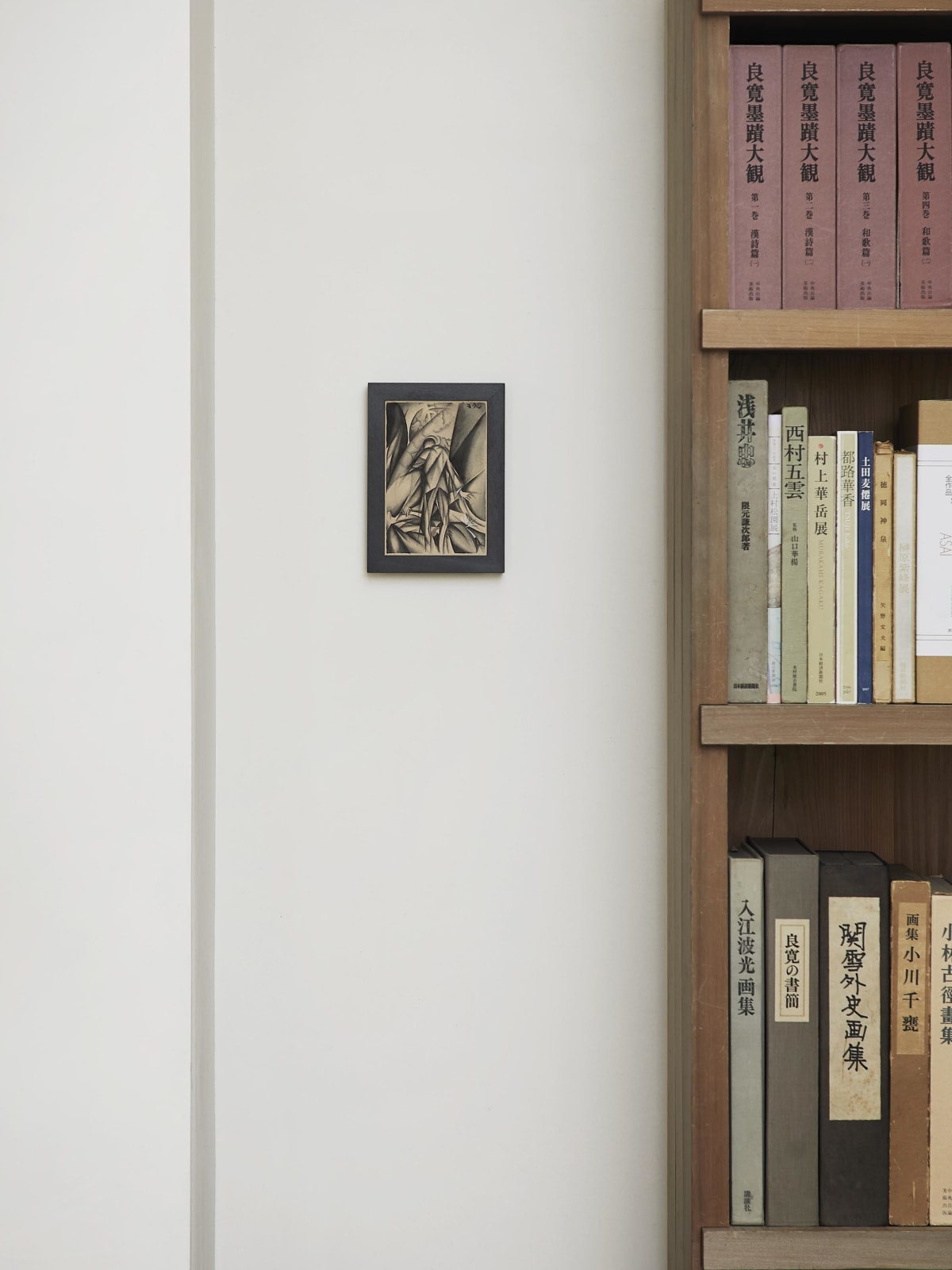Fukiya Kōji (1898–1979)
Work
Ink and water color on paper, framed
Illustration for Kunieda Kanji’s novel
Signed by the artist on the back
18.4 x 12.3 cm
22 x 16 cm (overall)
Further images
This is the third in a series of original illustrations for Nagareboshi (“Shooting star”), a novel for young girls that was written by Kunieda Kanji and serialized in the magazine Reijokai in 1923.
Fukiya Koji was mainly known for his jojoga, or “painting of lyricism.” This picture marks a stark contrast, though. It uses geometrical line segments and shading to boldly fuse the human figure with the background in a manner reminiscent of Futurism. It also differs from the drawings Koji was producing in the style of Aubrey Beardsley at the time. As such, it occupies a prominent and unique place within his oeuvre. The Futurist movement began in Italy and it is said Koji first encountered Futurist art through his teacher, Odake Chikuha and his senior pupil under Chikuha, Toda Kaiteki. This style is also on display in A Walk in Paris, which Koji drew while in France in 1926. It is noteworthy how this illustration predates A Walk in Paris by three years, before Koji’s stay in France.
Koji became a popular favorite at an early age and he subsequently achieved great success as an illustrator after his youthful experiences in Paris. This work provides proof that his output was influenced by his vibrant response to contemporary global artistic trends. As such, it provides a valuable insight, not only into Koji’s development as an artist, but also into the diversity and possibilities that opened up during the Taisho era (1912–1926).
Fukiya Koji (painter, poet; 1898–1979)
Niigata-born painter and poet. His real name is Kazuo. Studied nihonga under Odake Chikuha. Started painting illustrations for girls’ magazine on Takehisa Yumeji’s recommendation, and became popular for his sweet and delightful style. Went to France for the study of painting for four years. Selected to Le Salon d’Automne several times alongside holding solo exhibitions. After returning to Japan, active in illustrating books and publishing illustrated anthologies of poetry. His distinctive style is known as “painting of lyricism.”
Fukiya Koji was mainly known for his jojoga, or “painting of lyricism.” This picture marks a stark contrast, though. It uses geometrical line segments and shading to boldly fuse the human figure with the background in a manner reminiscent of Futurism. It also differs from the drawings Koji was producing in the style of Aubrey Beardsley at the time. As such, it occupies a prominent and unique place within his oeuvre. The Futurist movement began in Italy and it is said Koji first encountered Futurist art through his teacher, Odake Chikuha and his senior pupil under Chikuha, Toda Kaiteki. This style is also on display in A Walk in Paris, which Koji drew while in France in 1926. It is noteworthy how this illustration predates A Walk in Paris by three years, before Koji’s stay in France.
Koji became a popular favorite at an early age and he subsequently achieved great success as an illustrator after his youthful experiences in Paris. This work provides proof that his output was influenced by his vibrant response to contemporary global artistic trends. As such, it provides a valuable insight, not only into Koji’s development as an artist, but also into the diversity and possibilities that opened up during the Taisho era (1912–1926).
Fukiya Koji (painter, poet; 1898–1979)
Niigata-born painter and poet. His real name is Kazuo. Studied nihonga under Odake Chikuha. Started painting illustrations for girls’ magazine on Takehisa Yumeji’s recommendation, and became popular for his sweet and delightful style. Went to France for the study of painting for four years. Selected to Le Salon d’Automne several times alongside holding solo exhibitions. After returning to Japan, active in illustrating books and publishing illustrated anthologies of poetry. His distinctive style is known as “painting of lyricism.”





